South Ireland: Medieval Towns and Lush Countryside
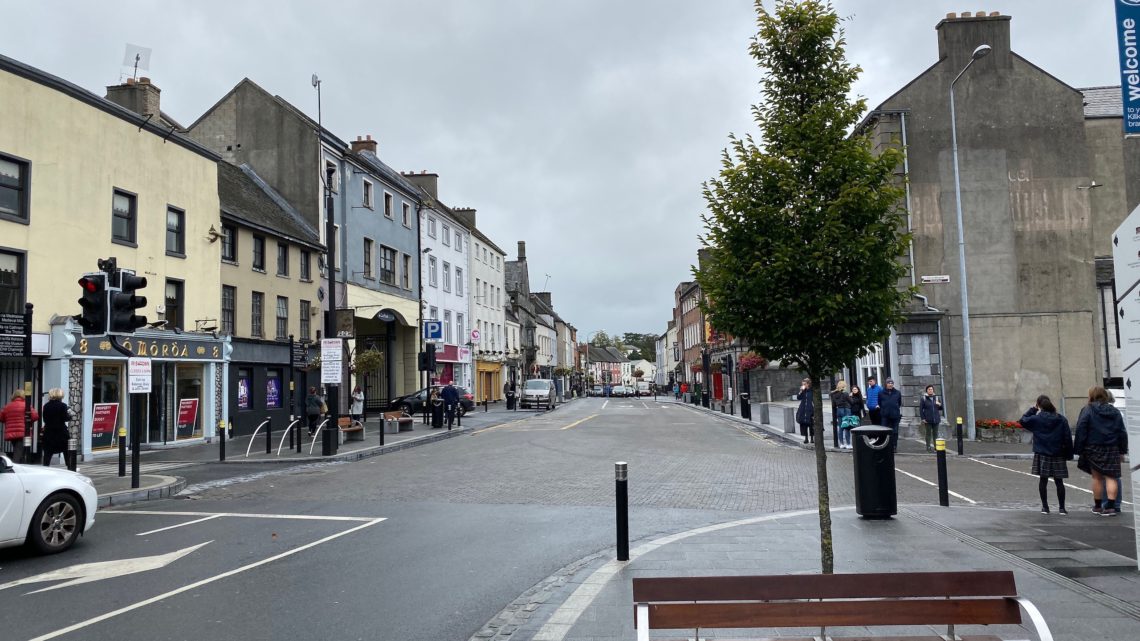
Ireland is a beautiful and mystical country. Although I began my visit
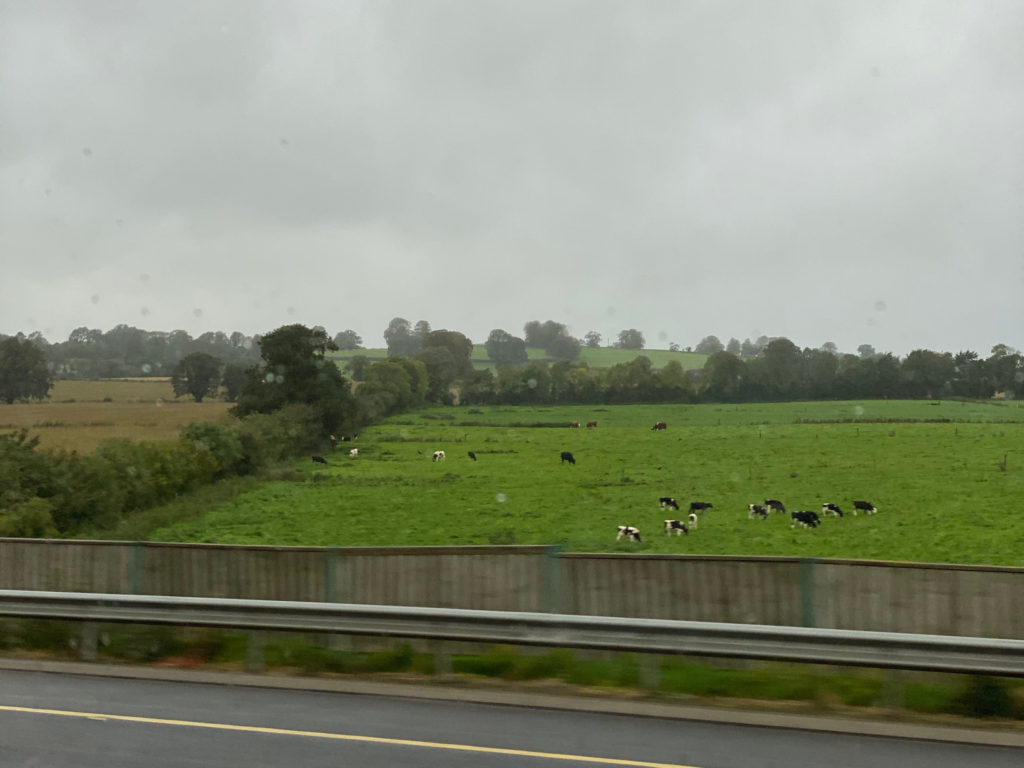
It was only a short ride outside of Dublin before the scenery turned from brick and stone buildings to green farmland. I could see several cows and sheep as the bus drove through the picturesque Irish countryside. Ireland is known for being very green, which is why it gets its nickname: “the Emerald Isle.” The lush greenery is a result of the island’s frequent rainfall and mild temperatures.
Kilkenny
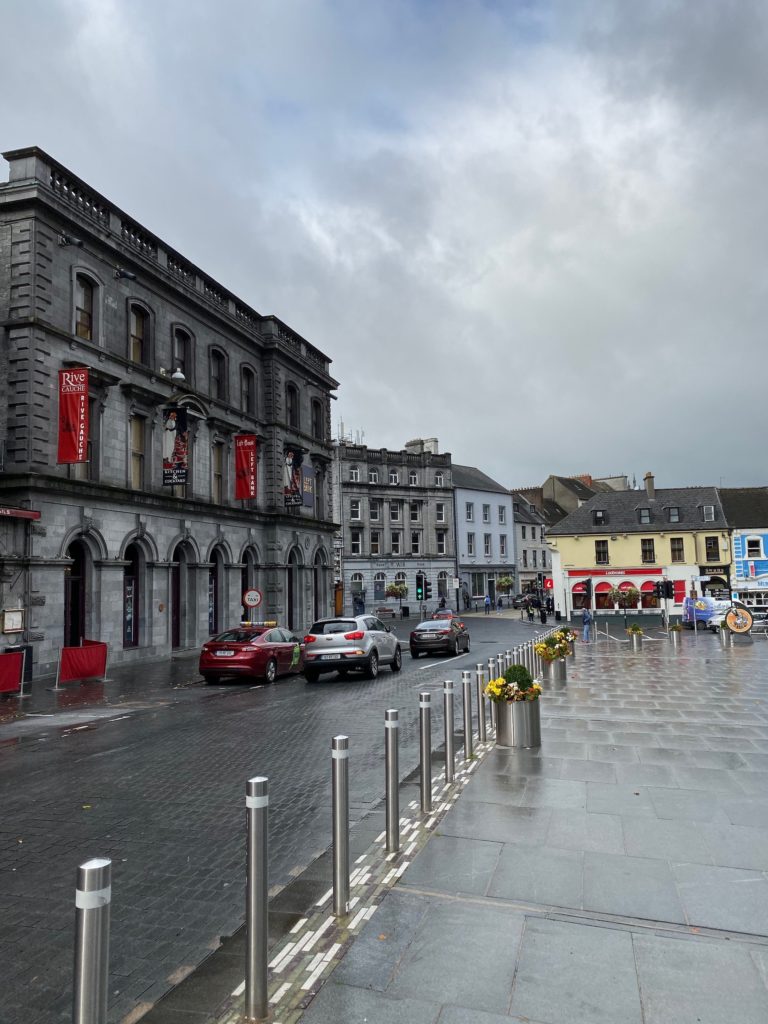
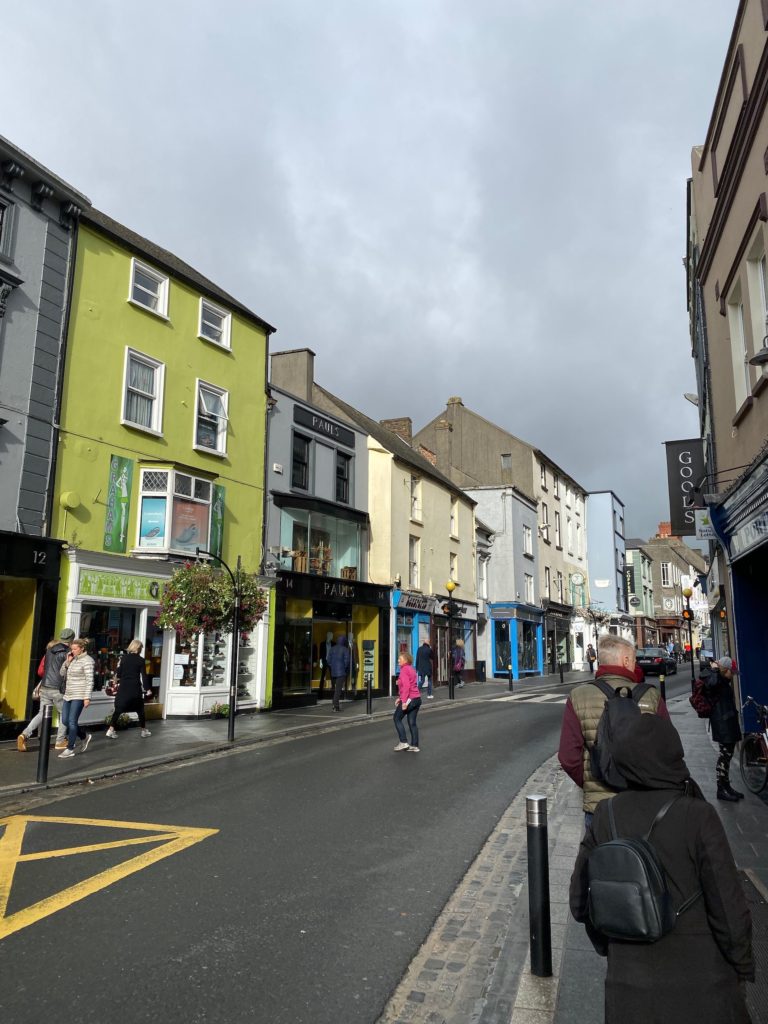
We arrived at our first stop in Kilkenny, located about an hour and a half outside of Dublin. Fee and I departed the bus and headed towards the town center. We were joined by our newly made friend, Meenal, from San Francisco. She had come to Ireland on a work trip but had a couple of days to spare for sightseeing. As one of Ireland’s finest medieval towns, Kilkenny is a delight to walk through. Our group passed through streets filled with lovely black stone buildings and colorful houses. The fabric of the town consists of pitched roofs, a major contrast to the flat-roofed buildings that make up Dublin.
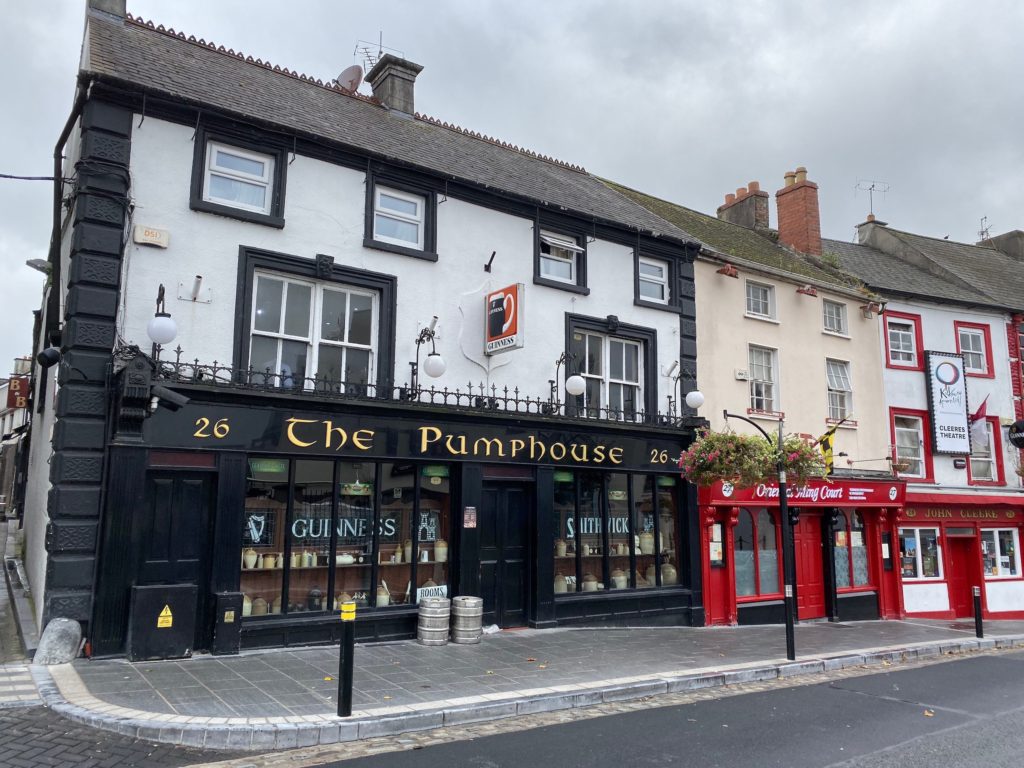
Much like in the rest of Ireland, the town’s buildings contain whimsical shopfronts on the ground floor. I had previously seen similar shopfronts in the Temple Bar area of Dublin. These entrances stand out for bringing color to a neighborhood that is otherwise filled with plain brick buildings. In contrast, Kilkenny is already a colorful town, and thus the entrances here are coordinated to match their respective stucco façades.
Two Cathedrals
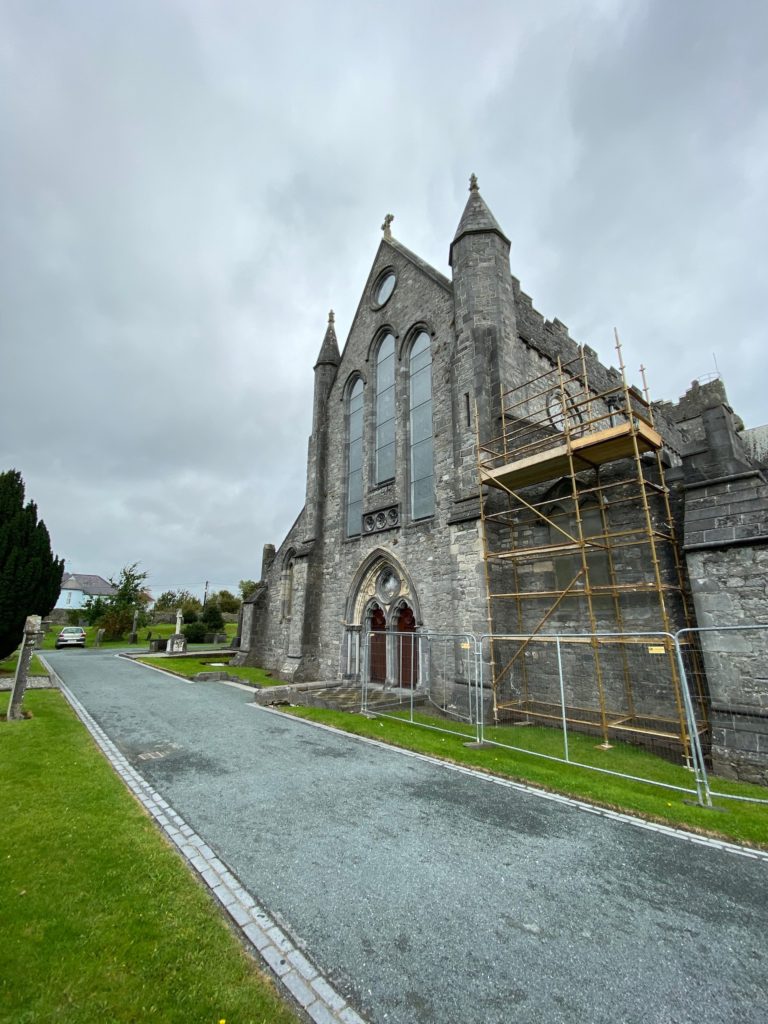
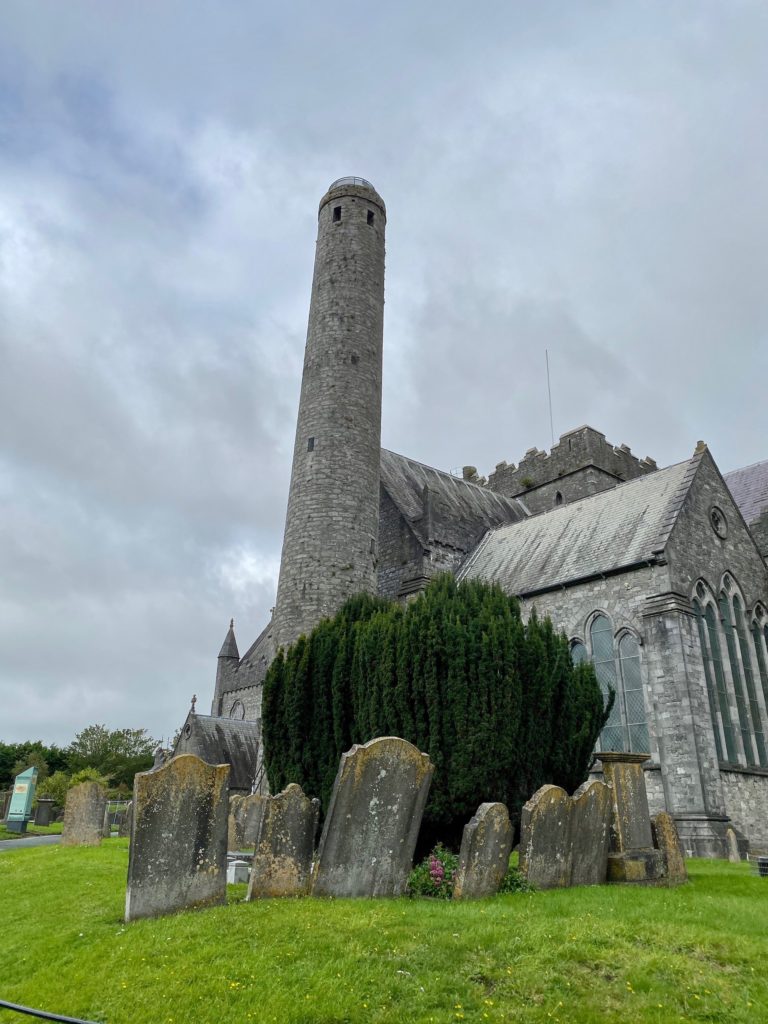
From the town center, it was a short climb up to St. Canice’s Cathedral: one of the settlement’s original medieval landmarks. This 13th-century Gothic cathedral is the second-longest in Ireland, only behind St. Patrick’s Cathedral in Dublin. The church is built primarily out of gray limestone and features stained glass windows. Compared to other Gothic cathedrals, this one lacks flying buttresses and instead features a simple gable roof. Next to the main building sits a round tower. These Celtic structures are believed to have originally functioned as bell towers for their respective cathedrals. A handful of towers still exist across the island, many at the sites of ruined or former churches. St. Canice’s tower is one of the few that can still be climbed today.
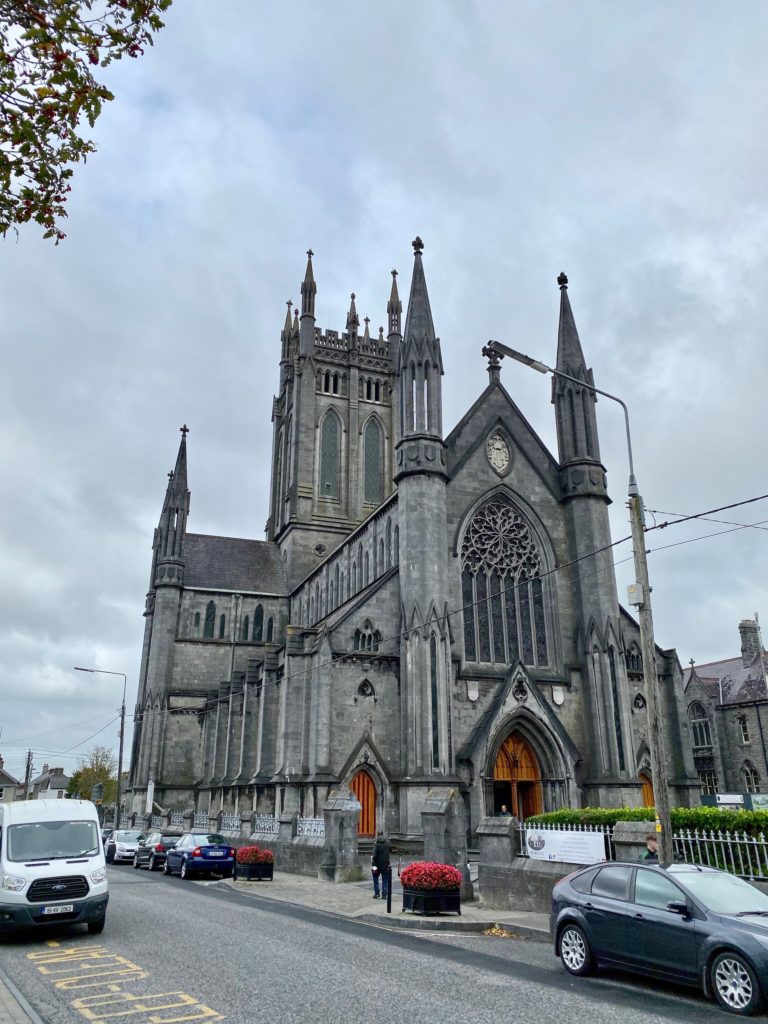
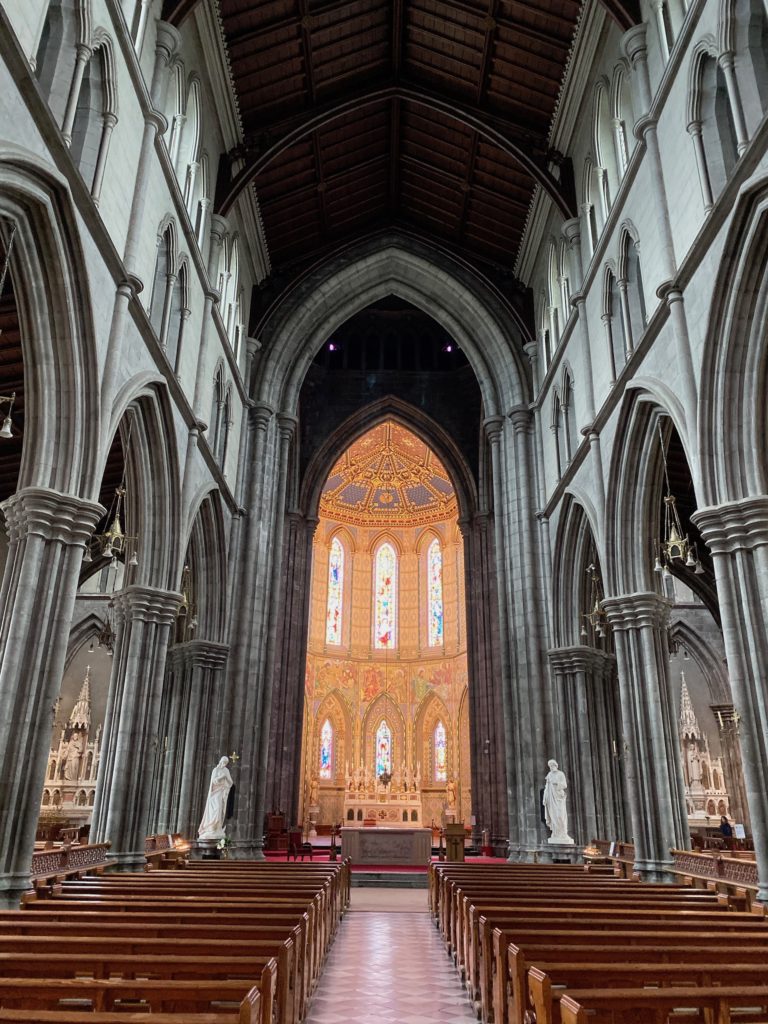
Since we only had a short time in Kilkenny, we decided to bypass the entrance fee for St. Canice’s Cathedral and instead walk over to another landmark, which is free to enter. St. Mary’s Cathedral was designed by William Deane Butler in the 19th century. It is believed that Gloucester Cathedral in England gave the architect his inspiration behind the Gothic design. However, unlike Gloucester, this cathedral is built entirely out of the local gray limestone.
The exterior of the building is elaborate, with piercing octagonal spires dominating the corners and an array of pilasters lining each side of the nave. Although these pilasters would normally support flying buttresses in a typical Gothic cathedral, they are only for decorative purposes at St. Mary’s Cathedral. In lieu of buttresses, the nave and transept have simple gable roofs. A 186-foot tall tower crowns the church, which is visible all across the town. My friends and I stepped into the grand central nave. Like other Gothic churches, this nave is flanked with ornamented columns that hold up pointed arches. The area around the tower features even larger pointed arches, which reach up to an expansive wooden ceiling. As I do with every church I visit, I took a moment to let go of my surroundings and appreciate the architectural beauty around me.
A Monumental Castle
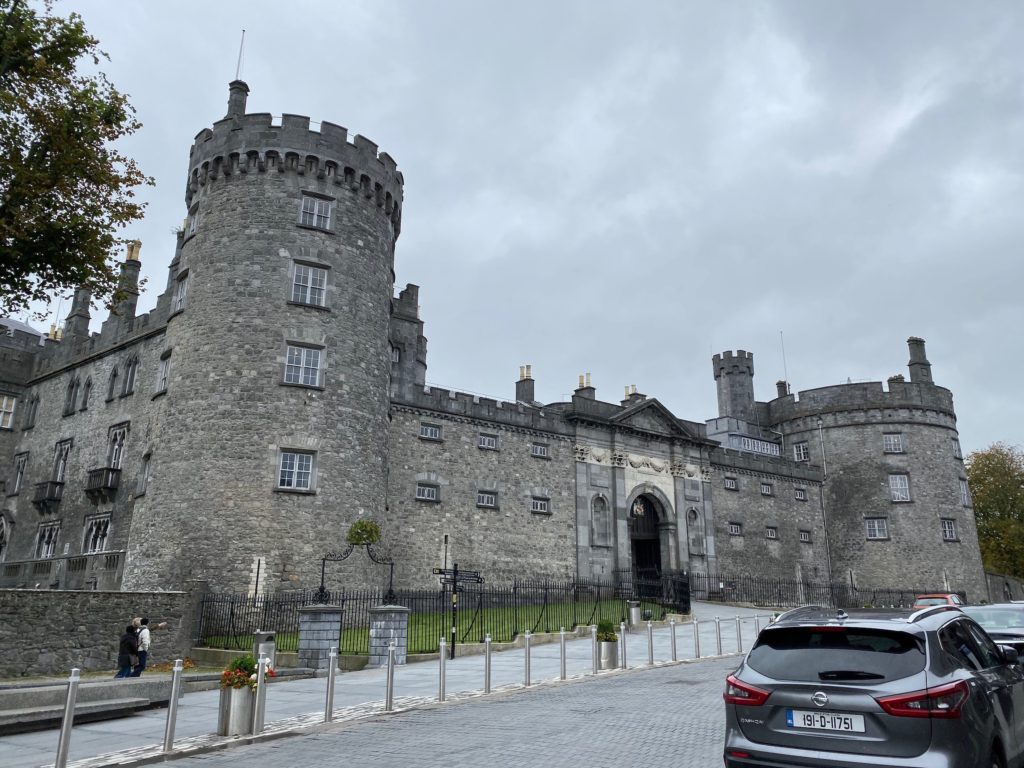
If there is one monument that outshines the rest, it is Kilkenny Castle. This Norman fortress was originally built for defensive purposes but was primarily used as a residence for the wealthy Butler family during the middle ages. Although the castle dates back to the 13th century, much of what exists today is the result of restoration projects that took place in the 19th and 20th centuries. Like other landmarks in the town,
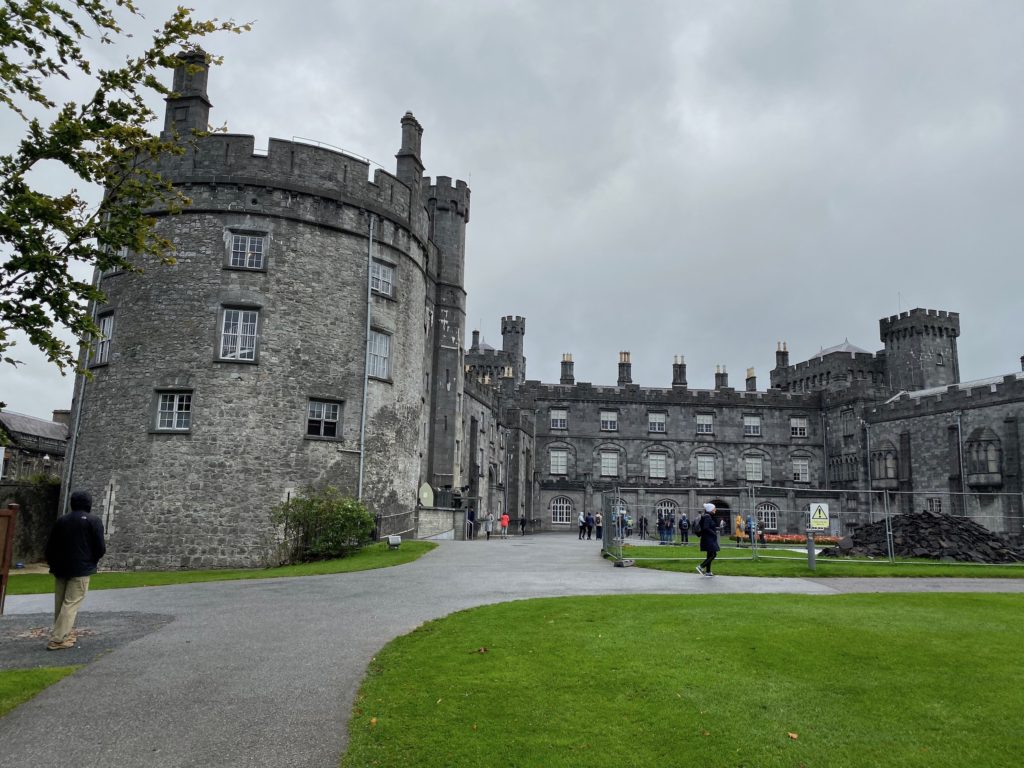
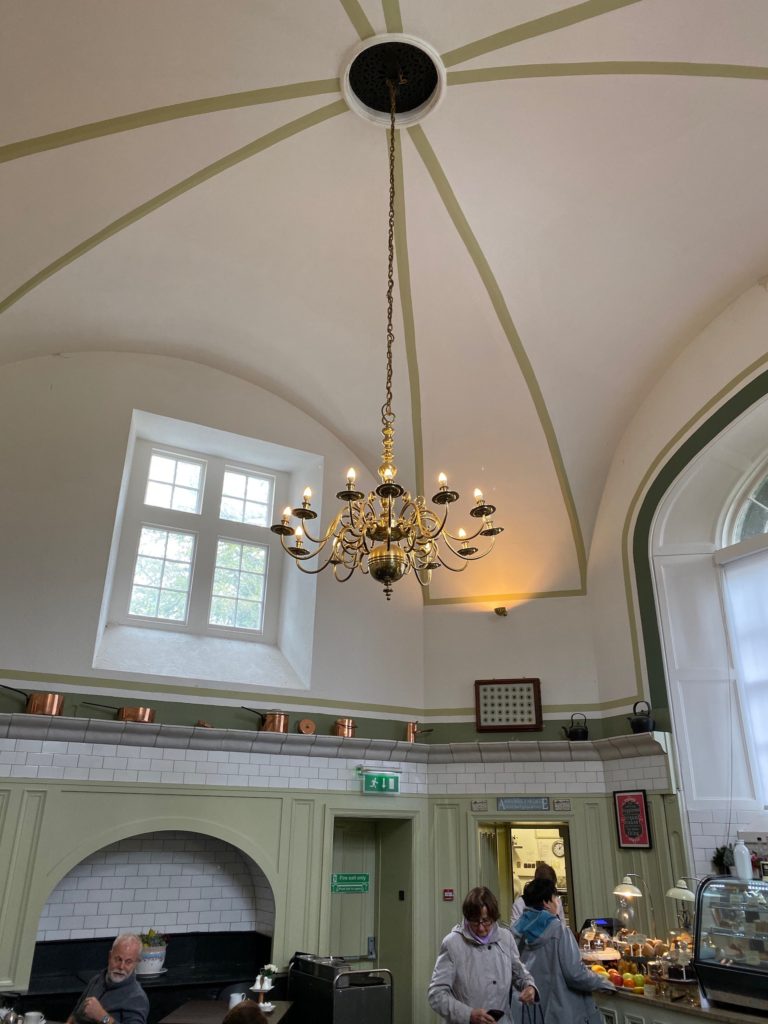
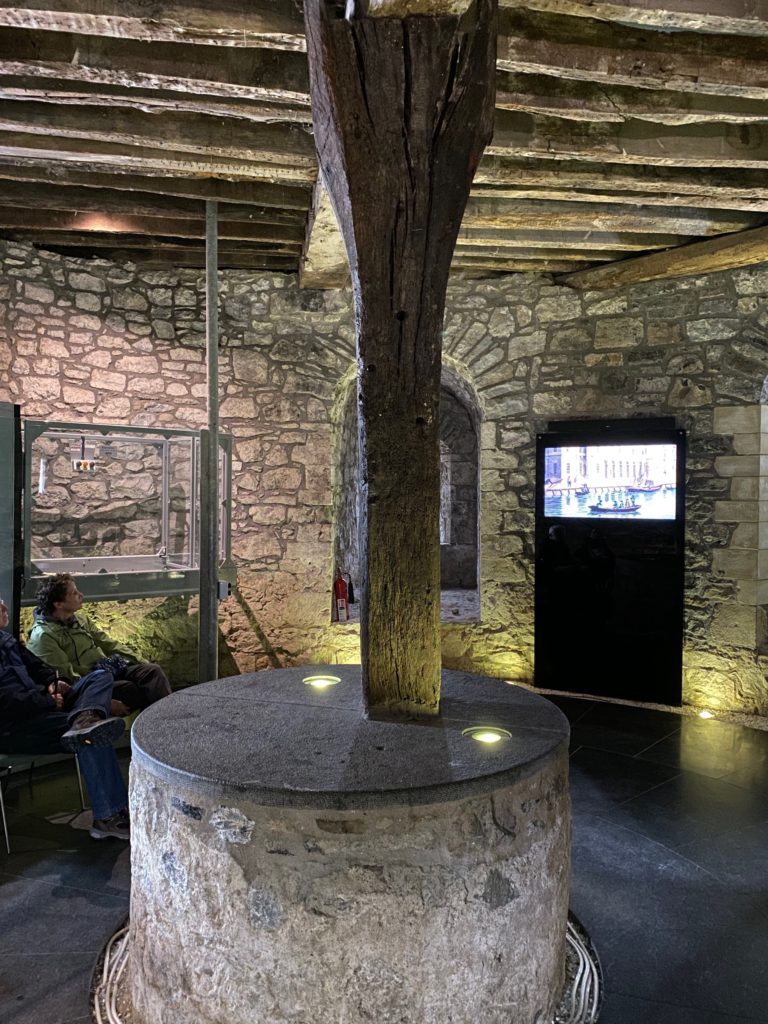
Three of the castle’s four original towers survive today, and what was once the prominent court is now an open green space. Much like with St. Canice’s Cathedral, our group decided to bypass paying the entrance fee and instead took a peek into the castle’s tea room. This elegant space features an olive green color-palette, gently vaulted ceilings, and a lovely golden chandelier above the seating area. We also dipped inside the base of the south tower, where we got a look at the original 13th-century foundation. Rough stone contrasts with jagged wooden beams in this dimly lit space, and an audio-visual presentation takes visitors back into medieval times.
Wicklow Mountains
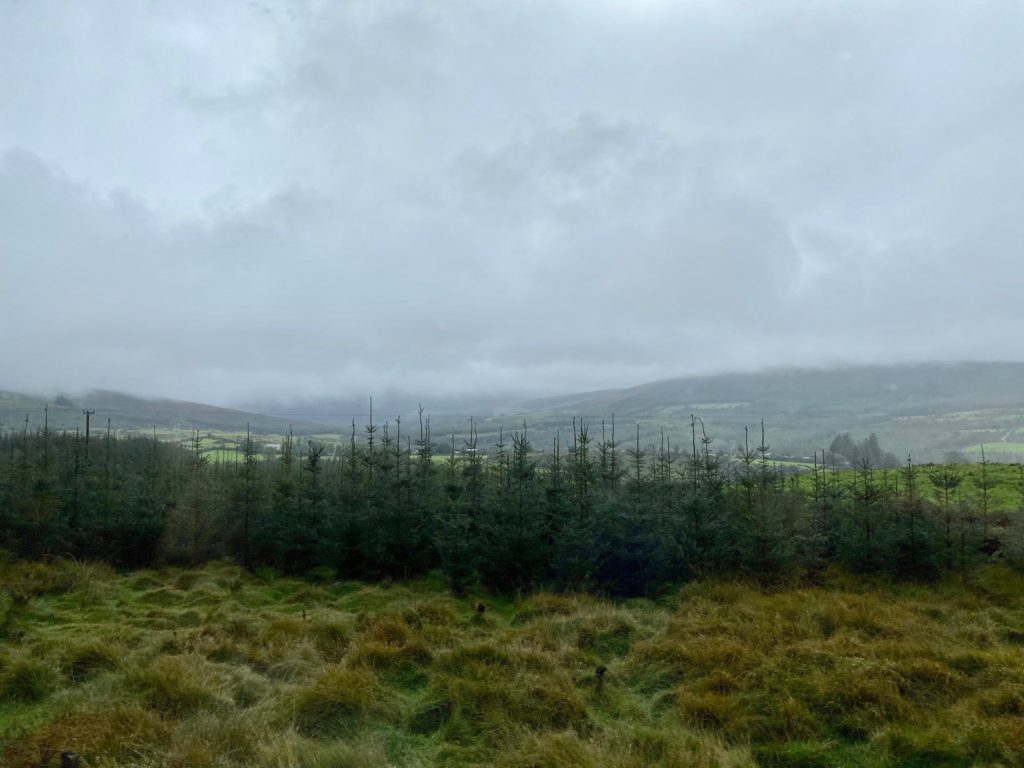
Exploring the castle was the perfect place to end our stop in Kilkenny, as the bus was scheduled to depart from here. After a quick bite at the nearby food hall, we got back on the road and left the main highway for the windy country roads of South Ireland. Much like the English countryside outside of Bath, the Irish countryside had a mystical appearance on this rainy day. The rolling hills seemed to disappear behind the fog in the distance. The hills turned to mountains as we approached our next stop at one of Ireland’s national parks: the Wicklow Mountains.
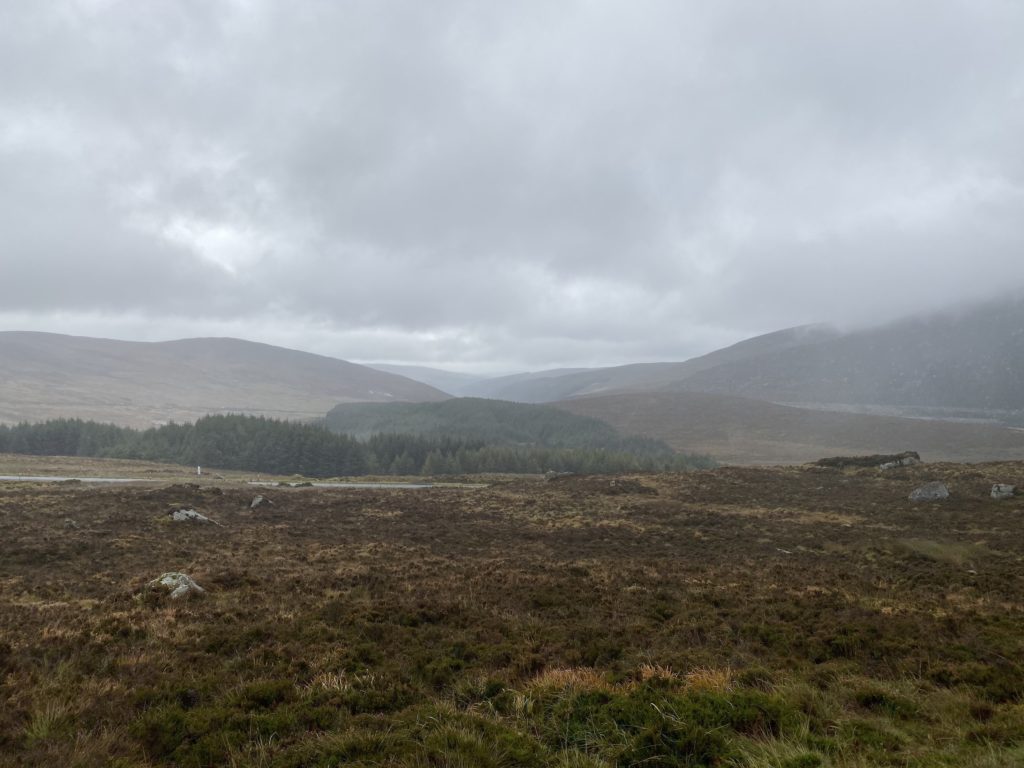
Our driver took us to the top of one of the valleys, where we got out of the bus for a scenic view across this beautiful area. Our guide welcomed us to the Wicklow Mountains, albeit with a slightly somber tone due to the weather conditions. It was amazing to see rolling mountains that appeared to stretch on for miles. However, it would have been even more breathtaking on a clear day. Instead, the mountains faded into the mist on this overcast day. The landscape had a barren look to it, as the grass had already turned from bright green to brown at this time of year. From this angle, I could only see a few evergreen trees in the foreground, surrounded by empty land.
Glendalough
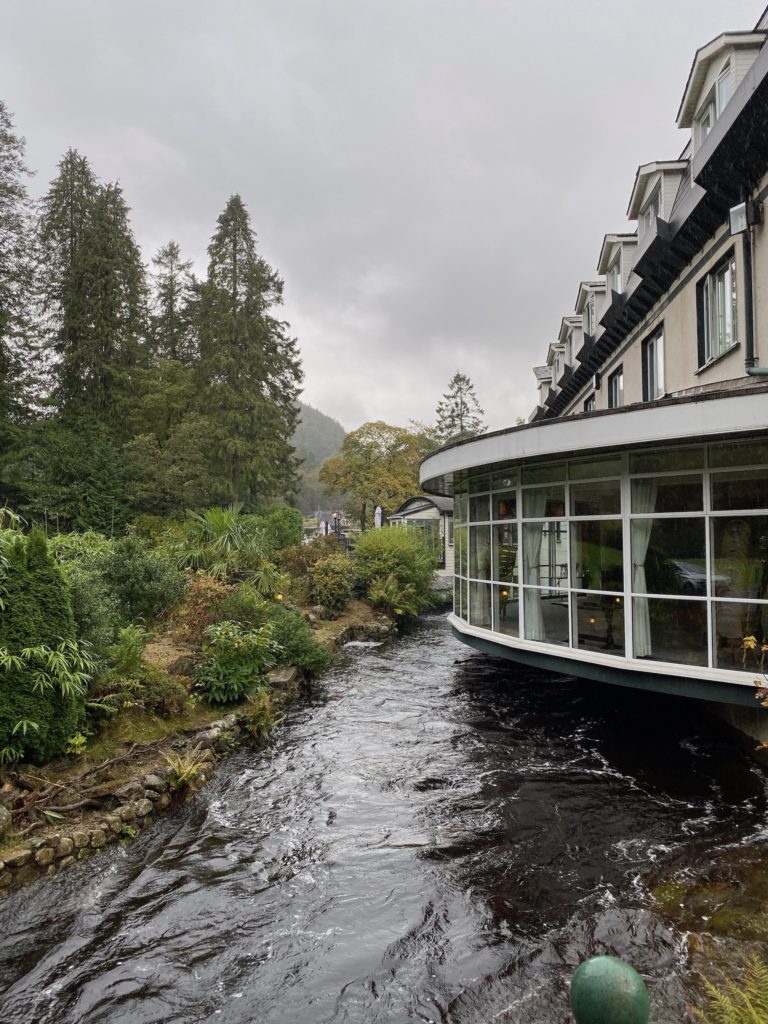
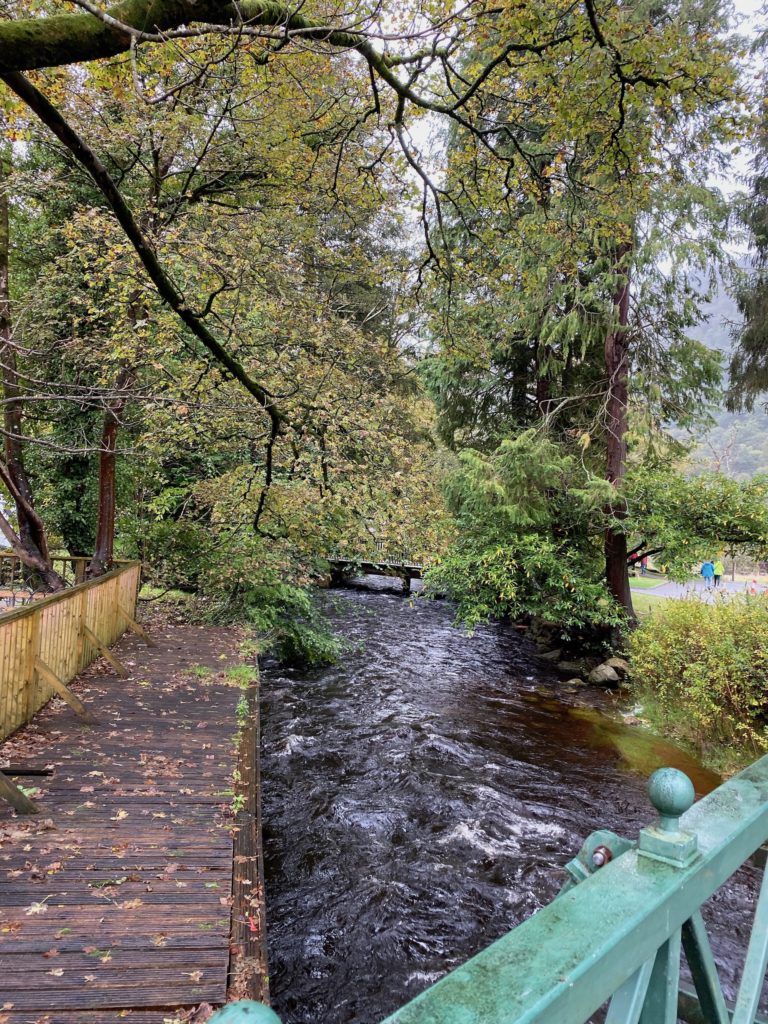
As we drove deeper into the mountains, the land became more lush and green, and the visibility improved as we dipped below the clouds. Shortly after, we arrived in Glendalough. This area, which means “Valley of two lakes” in Irish Gaelic, contains a small village. The bus parked at The Glendalough Hotel: the largest building in the village. I got out and walked right by a small river as I waited for the others, before setting off with our guide to the village’s sites.
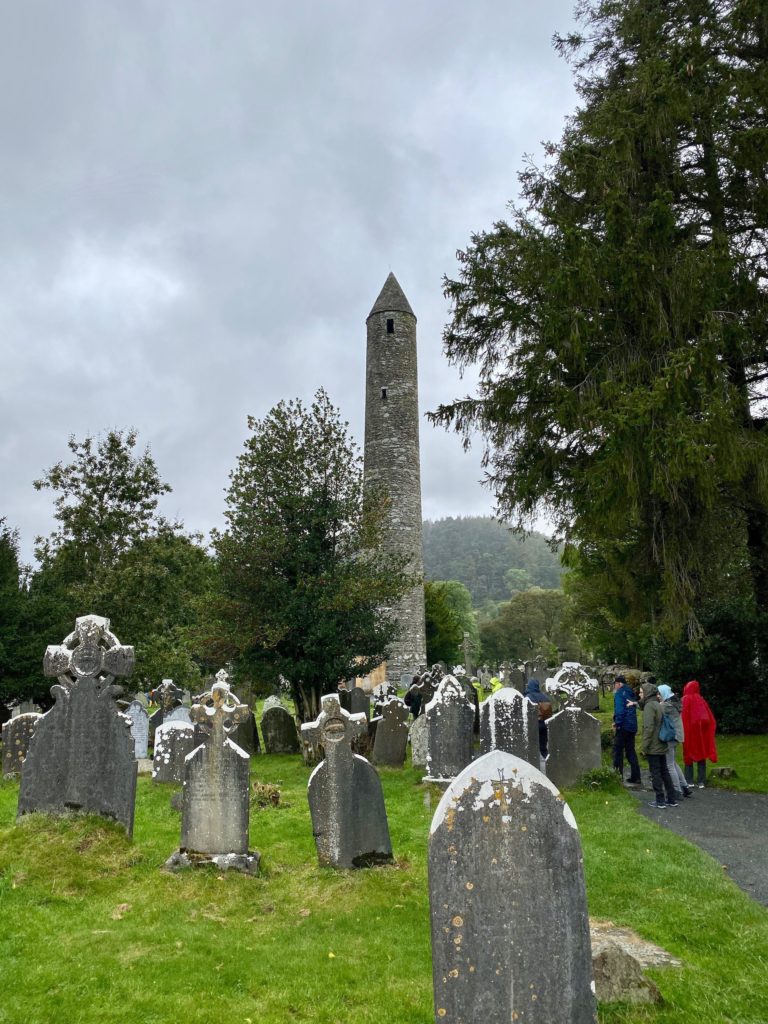
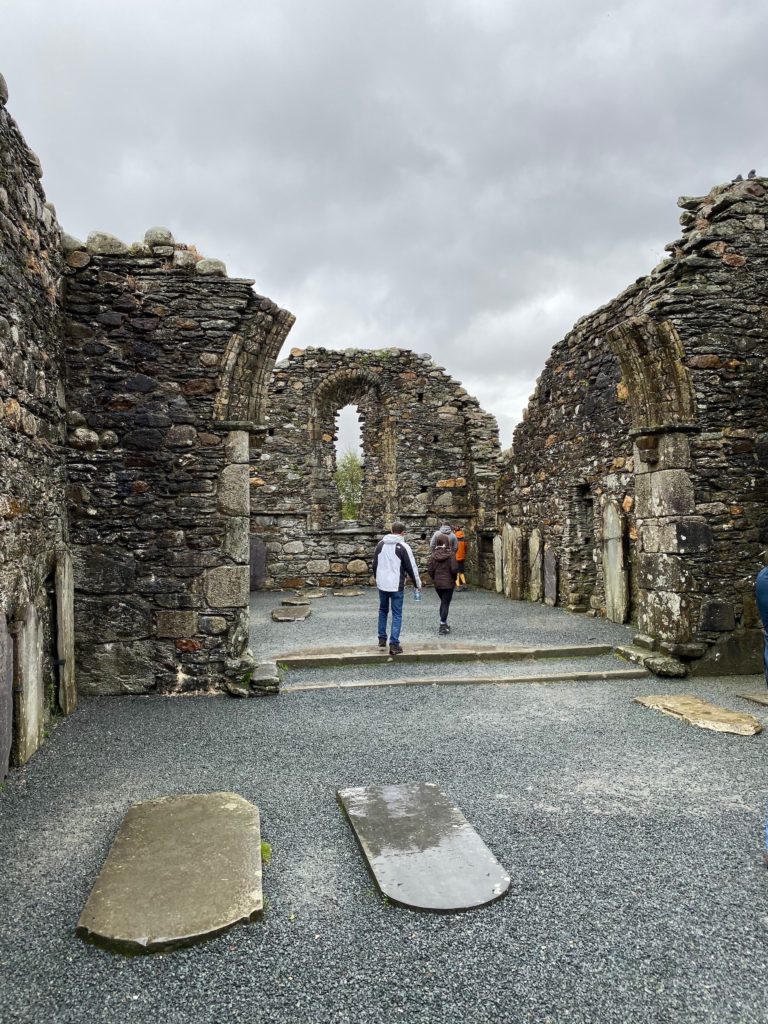
Glendalough is home to an early 6th-century monastic settlement. While these were once the centers of Irish civilization, most of them are no more than ruins today. As we entered the monastery, we passed under a ruined arch before entering the cemetery. From here, I could see another one of Ireland’s iconic round towers. In contrast to the one at St. Canice’s Cathedral, this one still has its conical top and is not open
As I mentioned earlier, these towers often mark where cathedrals once stood, and indeed Glendalough is home to the ruins of a grand cathedral. Although no more than an open-air stone structure today, I could clearly see what was once a tall arch forming a central nave, as well as an opening that once housed a stained glass window.
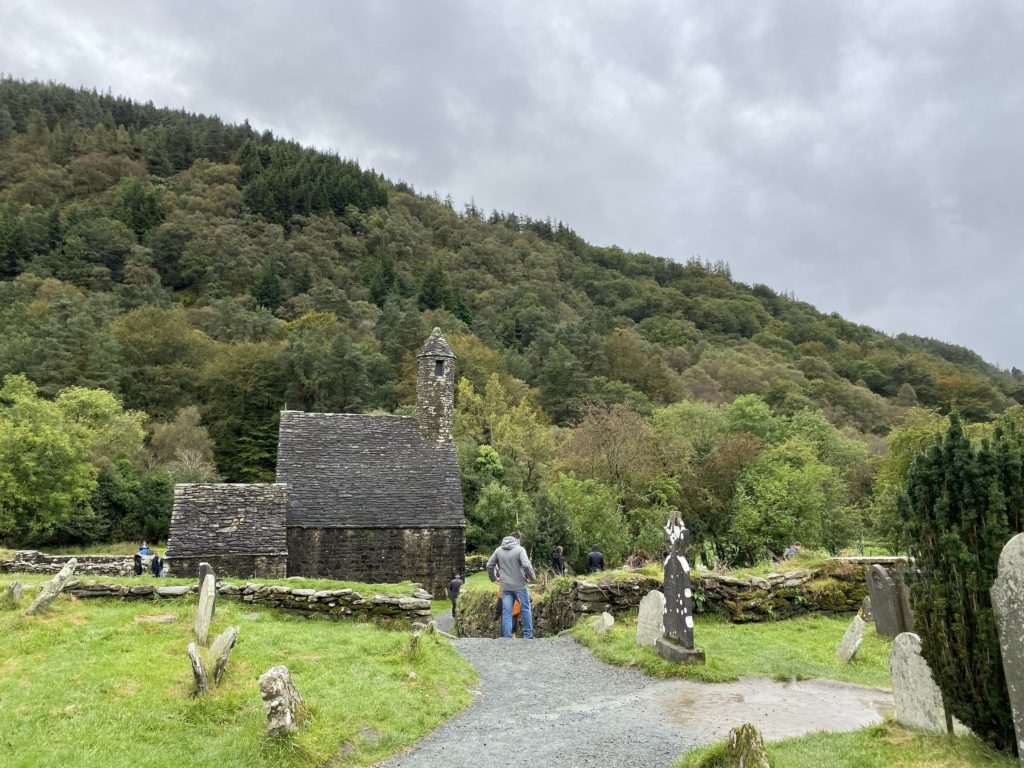
As I continued exploring the monastic site, I came across one stone structure that appeared a little more intact. Known as “St. Kevin’s Kitchen,” this small church features a tall gable roof over its nave, topped with a conical tower. Despite the building’s name, no food was ever cooked here. The bell tower is often confused for a chimney, hence giving the church its name. The building sits in front of a lush mountain backdrop.
A Stunning Hike
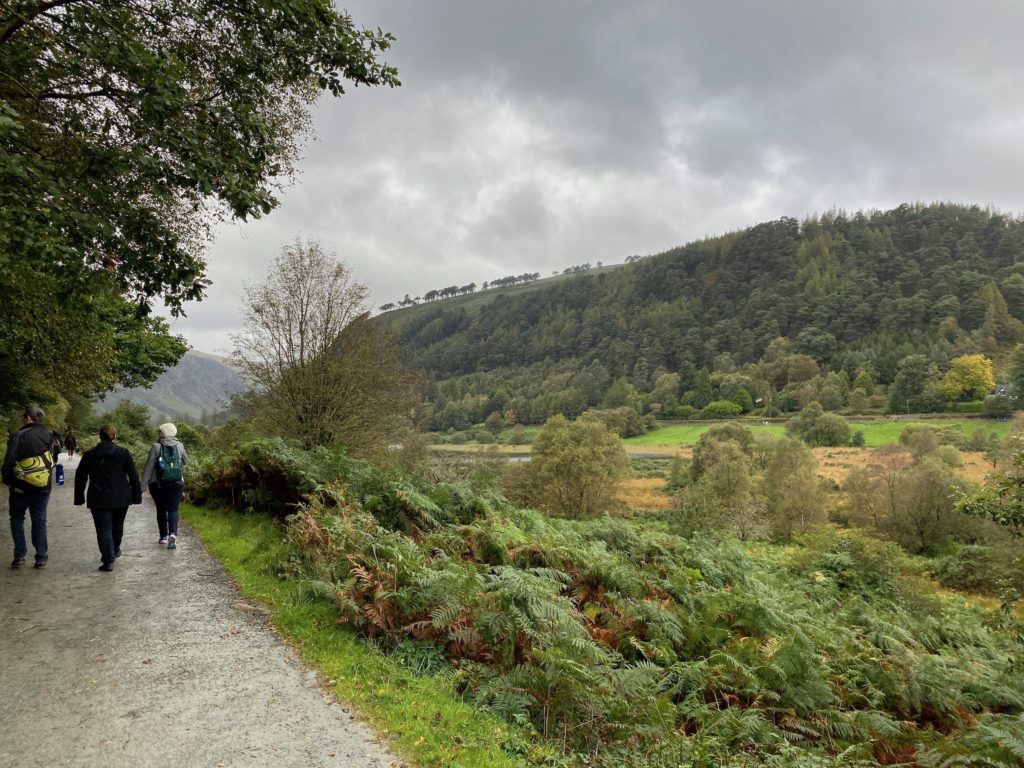
Our guide recommended a small hike through the valley, which would take us up to one of Glendalough’s two lakes. My friends and I began our walk along the path, which passed through picturesque woods with a commanding view of the valley. Ireland’s greenery was out in full swing here, with a variety of trees, ferns, moss, and marshland. Periodically, we would leave the main path to discover scenic waterfalls nestled within the forested landscape. From the trail, I could already see Glendalough’s lower lake. Although impressive, it was only a hint to what we were about to discover.
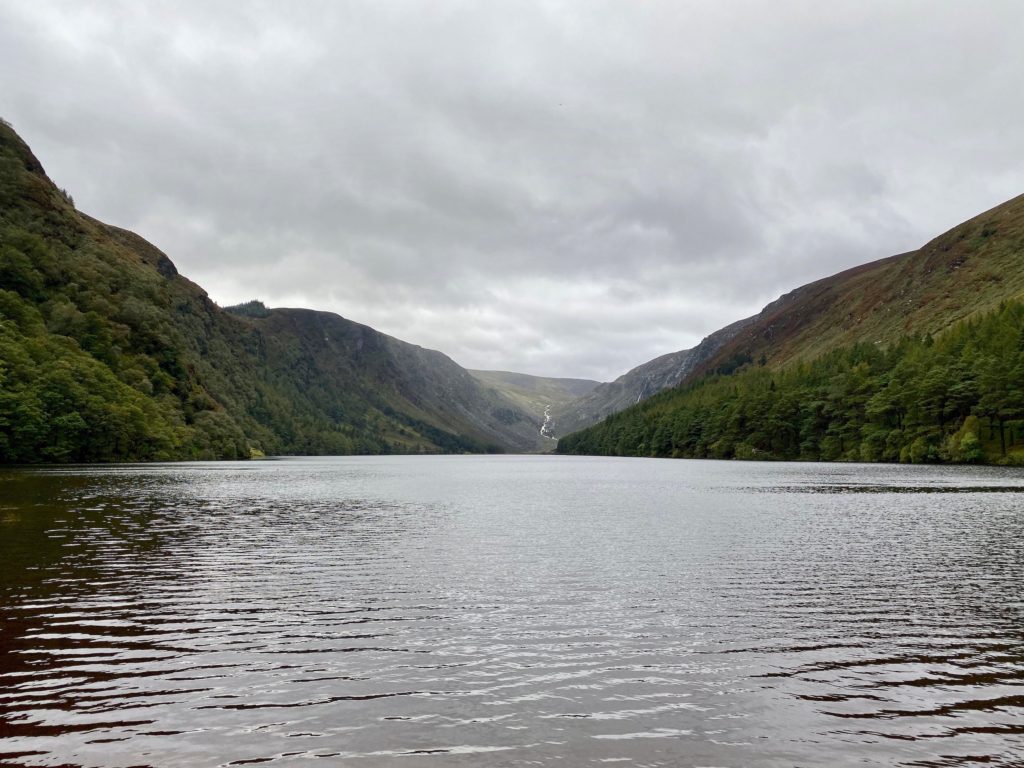
About a half-hour later, we arrived at the magnificent upper lake. I immediately had a huge smile on my face, as I couldn’t believe I was at my first lake within the British Isles. Like I imagined, this lake is surrounded by rolling mountains that slope upwards towards gently rounded peaks. The mountains were covered in trees at the edge of the lake but were otherwise barren with vegetation. The unique landscape of this area, along with many others in both Ireland and Great Britain, dates back to the last ice age. As the glaciers melted, they formed rolling valleys and long lakes. It was certainly a beautiful end to an amazing day touring South Ireland.
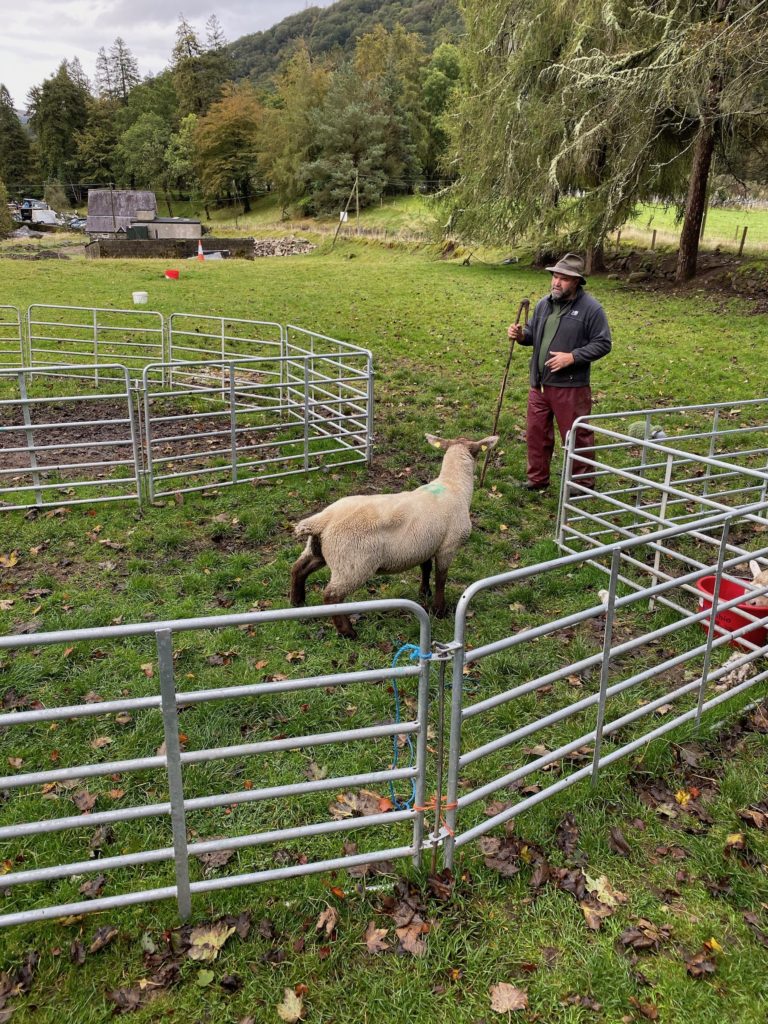
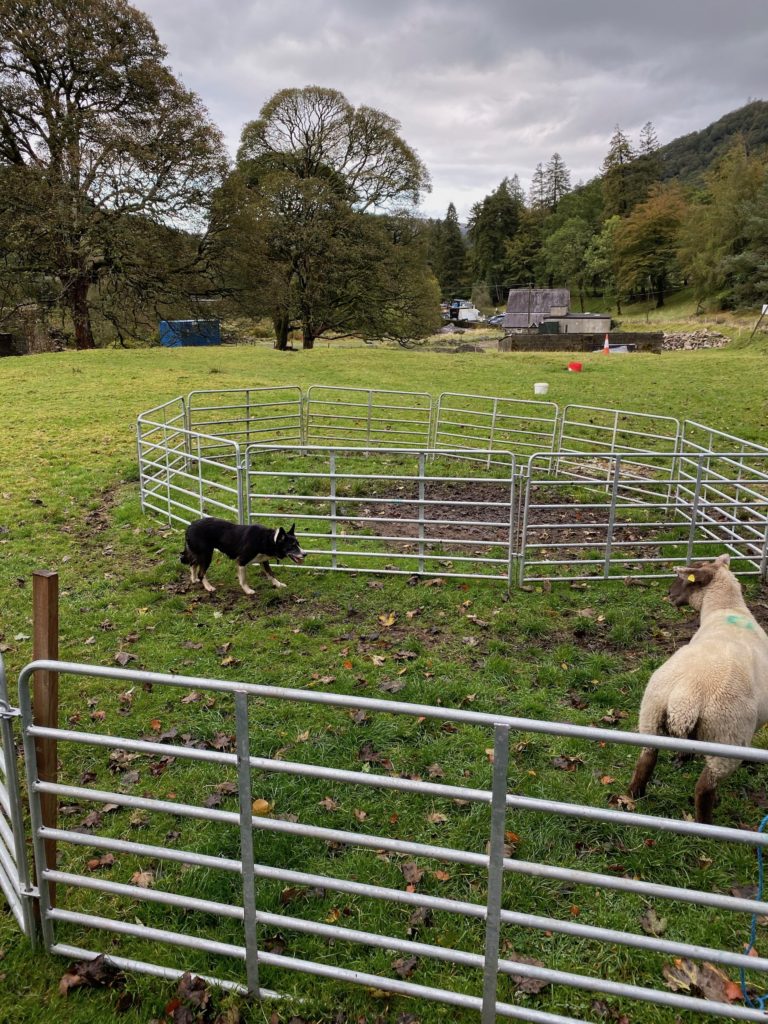
Our group headed back into the village, where we had one final stop at a working sheep farm. We all gathered around as a shepherd and his border collie gave us a herding demonstration. The sheepdogs learn to respond to different whistle commands, and will immediately run out to chase the sheep into a fenced-in area. The sheep view the dogs as predators and thus have a natural instinct to flee from them. Once the sheep have been herded, they are ready to be sheared for their fine wool. After the demonstration, it was time to get back on the bus to Dublin.
My experience touring South Ireland took me to medieval villages and countryside scenery. I got to visit small-town Ireland, which boasts a style of architecture that is unique to the area and of historical importance to the island. I also got my first taste of Ireland’s natural beauty and fully understood the significance of its nickname: “the Emerald Isle.” The Wicklow Mountains and rolling farmland are some of the greenest scenery I have seen throughout my travels and provide a pretty setting for the beautiful architecture of the area.

1produce
write my statistics paper https://term-paper-help.org/
ghost writer college papers https://sociologypapershelp.com/
buying papers online college https://uktermpaperwriters.com/
customized writing paper https://paperwritinghq.com/
write my paper cheap https://writepapersformoney.com/
buy academic papers https://write-my-paper-for-me.org/
buy papers online cheap https://doyourpapersonline.com/
paper writing service reviews https://top100custompapernapkins.com/
need help writing my paper https://researchpaperswriting.org/
write my economics paper https://cheapcustompaper.org/
buy a philosophy paper https://writingpaperservice.net/
online paper writers https://buyessaypaperz.com/
best write my paper website https://mypaperwritinghelp.com/
paper writing services legitimate https://writemypaperquick.com/
order custom paper https://essaybuypaper.com/
where can you buy resume paper https://papercranewritingservices.com/
best custom paper writing service https://premiumpapershelp.com/
pay someone to write a paper https://ypaywallpapers.com/
pay someone to write paper https://studentpaperhelp.com/
1surplice
database coursework https://brainycoursework.com/
coursework research https://courseworkninja.com/
creative writing coursework https://writingacoursework.com/
creative writing coursework https://mycourseworkhelp.net/
do my coursework https://courseworkdownloads.com/
coursework only degree https://courseworkinfotest.com/
coursework writer https://coursework-expert.com/
coursework paper https://teachingcoursework.com/
coursework on a resume https://buycoursework.org/
coursework sample https://courseworkdomau.com/
free personals site https://freewebdating.net/
online chatting sites https://jewish-dating-online.net/
online websites https://jewish-dating-online.net/
dating usa https://free-dating-sites-free-personals.com/
dating sites for singles https://onlinedatingsurvey.com/
free free https://onlinedatingsuccessguide.com/
dating https://onlinedatinghunks.com/
free sites https://datingwebsiteshopper.com/
dating website best https://allaboutdatingsites.com/
single women dating https://freewebdating.net/